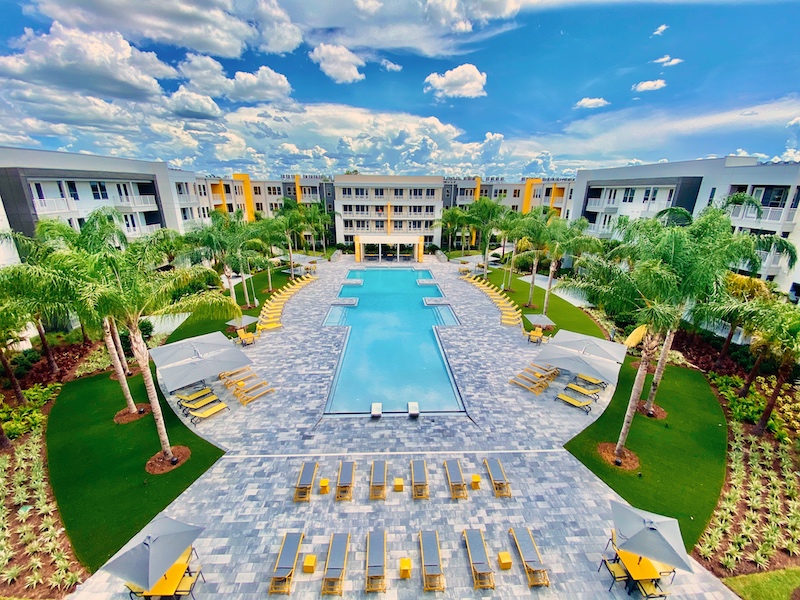The developer TPA Residential recently selected McShane Construction to build Woodward Crossing, a Class-A, 265-unit apartment complex on 7.8 acres in Buford, Ga. The apartments would be inside two buildings, four and five stories, designed by the architecture firm Niles Bolton Associates. Its completion is scheduled for May 2022.
The Southeast is one region of the country where multifamily construction remains steady, according to construction firms active there. “Our core footprint is currently in the Southeast, [where] apartments are performing very well right now,” says Marc Padgett, president of Summit Contracting Group. Demand for multifamily isn’t cooling off, either; Summit had signed contracts for more projects through September 2020 than it had during the same nine months last year. And Padgett expects 2021 to be better for his company than either of the two prior years.
“What many don’t realize is when the economy worsens, the demand for multifamily improves,” he explains.
Last January, the general contractor Brasfield & Gorrie completed Deca Camperdown, a $48 million, 11-story building in Greenville, S.C., with 217 apartments that average 1,007 sf and feature luxury finishes. NELSON Worldwide was the architect, and Daniel Corporation the developer.
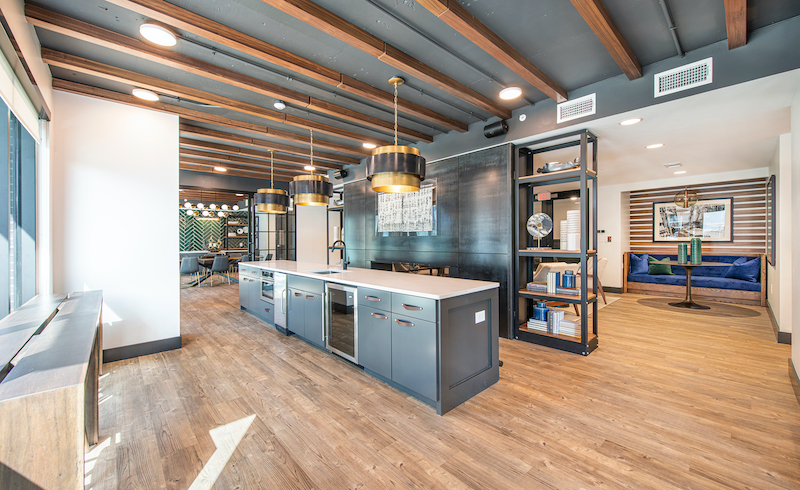
Deca Camperdown in Greenville, S.C., which was completed last January, boasts 217 homes with luxury interior finishes such as quartz countertops, stainless steel appliances, and designer light fixutres. Images: Kevin Ruck, courtesy of Brasfield & Gorrie
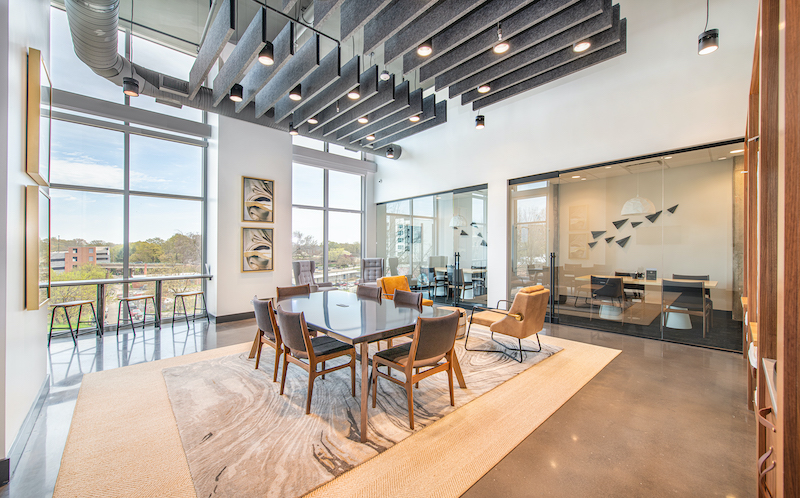
Opportunities for urban infill high rise construction are scarcer, acknowledges Roddy McCrory, Brasfield & Gorrie’s Vice President and Regional Business Development Director. But Alabama-based firm is encouraged by stronger demand for “affordable options”—like garden-style apartments or podium products—that support workforce renters’ needs in cities and suburbs in the Southeast.
PROJECTS PROCEED, DESPITE SOME MARKET SOFTNESS
On a national level, the multifamily sector, which over the past several years gave housing construction its wings, has been coming back to earth. The annualized rate for housing starts in buildings with five more apartments stood at 295,000 units in September, which according to Census Bureau estimates was 17.4% below starts for the same month in 2019. Multifamily permits, a barometer of future building, were also down in September, by 22.2% to 390,000 units.
Also see: Multifamily’s long-term outlook rebounds to pre-COVID levels in Q3
Multifamilybiz.com, citing Dodge Data and Analytics as its source, reported that for the 12 months ending in September, multifamily starts were off 5%, compared to a 7% gain in single-family starts over the same period.
CBRE’s economic advisers predict the multifamily market will reach its bottom in the fourth quarter of 2020 and begin recovering in the first quarter of 2021. Vacancies will rise to 7.2% by the end of 2020, a full 3.1 percentage points higher than what’s projected for the end of 2021.
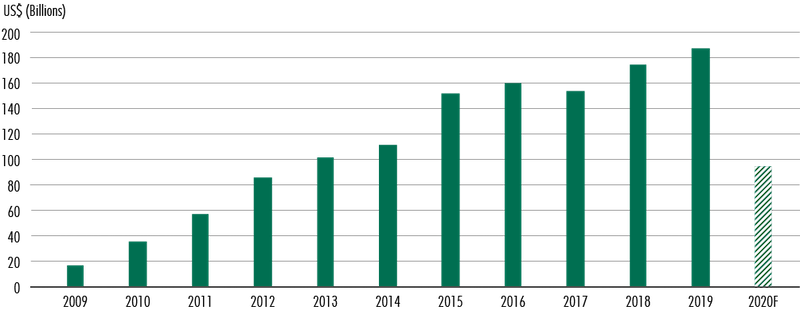
CBRE projects that investment in multifamily properties will be way off this year, but start recovering in 2021. Image: CBRE
This national pullback notwithstanding, large multifamily projects continue to get built, often as centerpieces of ambitious redevelopment plans. Last August, Brasfield & Gorrie completed The Julian, a 14-story 381,000-sf apartment complex in Orlando, Fla., designed for Ustler Development by Baker Barrios Architects, with 409 units and a 10-story 234,000-sf parking garage. The Julian is part of Creative Village, a 68-acre mixed-use transit-oriented urban infill neighborhood.
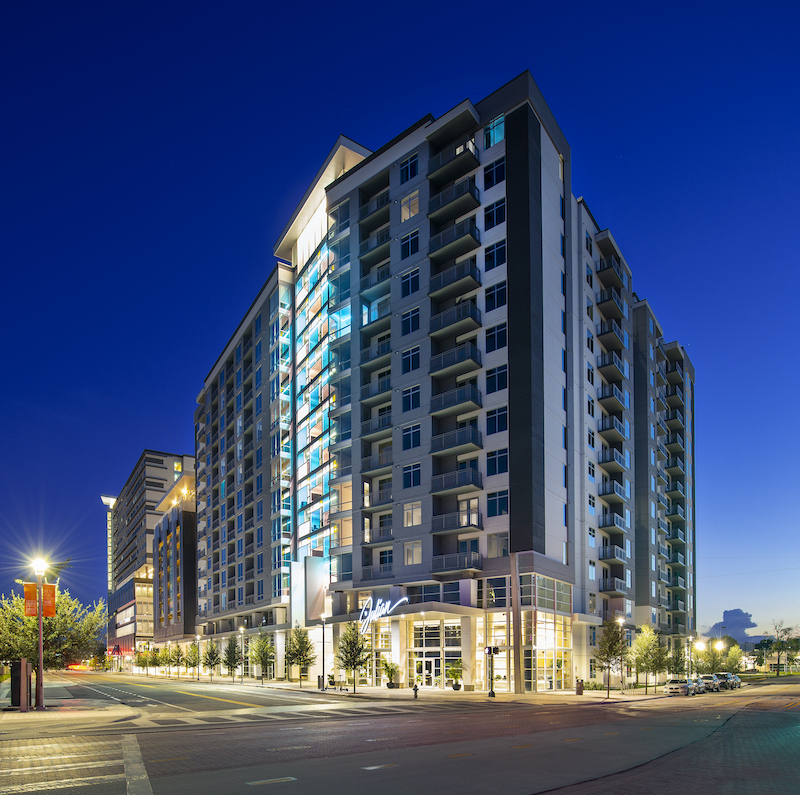
The Julian Apartments are the first housing in Orlando's Creative Village neighborhood development that are not restricted to students of the new downtown University of Central Florida campus. Image: Ben Tanner Photography, courtesy of Brasfield & Gorrie
That same month, ground broke for the $130 million AJ Railyards mixed-use building on 2.89 acres in Sacramento, Calif. (Brown Construction is the GC, LPAS Architects the design architect.) AJ Railyards will have 345 rental apartments (69 of them affordable), and 5,000 sf of ground-floor retail. This project, scheduled for completion in the winter of 2022, is a partnership between LDK Ventures and USA Properties Fund. It is part of a 244-acre urban infill redevelopment that, while still in its early stages, will eventually double the size of downtown Sacramento.
Also see: Miami’s yacht-inspired UNA Residences begins construction
On October 27, Shawmut Design and Construction broke ground on 1.16 acres in Providence, R.I., for Emblem 125, a nearly $90 million development that, when it opens in the summer of 2022, will include 248 residential units, 22,700 sf of ground-floor retail space, and an 1,800-sf rooftop space. This mixed-use building, developed by Exeter Property Group and designed by Torti Gallas + Partners and ZDS, is one of the largest to break ground within the I-195 Redevelopment District. Rhode Island’s Governor Gina Raimondo lauded Emblem 125 as “a huge step forward for the growth of the Providence Innovation and Design District.”
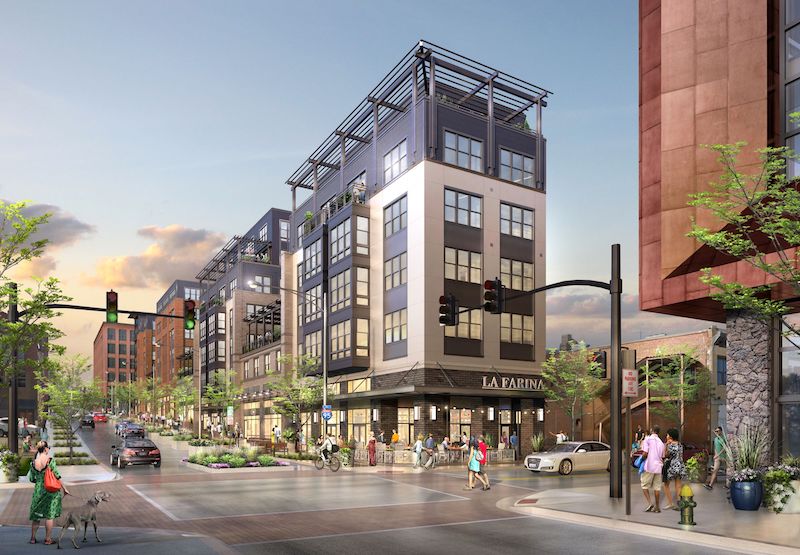
A rendering of Emblem 125, a $90 million multifamily project that will be part of Providence, R.I.'s Innovation and Design District. Image: Exeter Property Group.
COVID-19 RATTLES SUPPLY CHAIN
As was the case for other building types, multifamily supply and demand were hobbled by the spread of the coronavirus. In Freddie Mac’s 2020 Midyear Outlook, Steve Guggenmos, the agency’s Vice President of Research and Marketing, wrote that multifamily demand in the second quarter saw “a meaningful slowdown given the nationwide shutdown,” along with a high rate of lease renewals as tenants stayed put during the height of quarantines and lockdowns. Guggenmos also cited estimates by Reis, a leading commercial real estate data source, that multifamily completions tracked at least 30% lower than pre-pandemic levels through the first half of 2020.
Some market watchers also contend the COVID-19 pandemic drew attention to the country’s chronic housing shortage. And the virus certainly changed behaviors on multifamily jobsites.
Gilbane Building Company is using an artificial intelligence tool on some of its multifamily sites to perform checks on whether people coming to the site are wearing face coverings, and to provide temperature checks. Gilbane was also an early adopter of Proximity Trace, a wearable technology that detects social distancing.
Brasfield & Gorrie has limited the number of workers in its jobsite hoists and elevators, heightened cleaning protocols, and made changes in its break areas and food vendors, says McCrory.
The pandemic has created some supply-chain headaches, especially in the availability and pricing of lumber, says AEC sources. “The biggest impact we are seeing [on multlfamily] is the sourcing of materials for core building components,” says Sean Buck, Vice President-Operations for JE Dunn Construction. He explains that in the high-rise space, products like electrical fixtures, countertops, and casework are typically sourced from various countries. “Given the current COVID and political environment, this poses some procurement risk,” and has led JE Dunn more toward U.S.-based suppliers.
Padgett says Summit Contracting has always strove to buy American, “and right now, 100% made in the U.S.A. is most desirable” to minimize delays in availability and delivery. Padgett adds that “good planning and coordination” can overcome supply-chain blips most of the time.
Gilbane, which has been tracking the supply-chain status of critical commodities on a biweekly basis this year, saw signs of “stabilization in both price and availability” in the third quarter, according to Grant W. Gagnier, the firm’s Vice President and New York City Business Unit Leader.
LUXURY AND AFFORDABILITY IN DEMAND
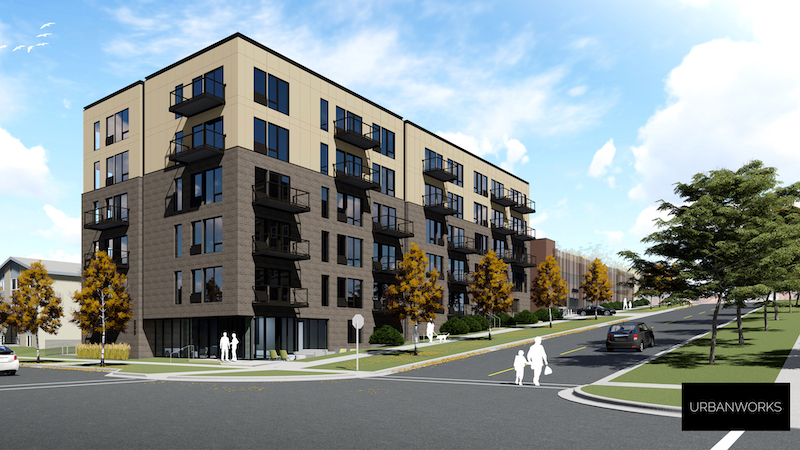
590 Park in St. Paul features 92 upscale micro apartments that target local professionals. Image: UrbanWorks.
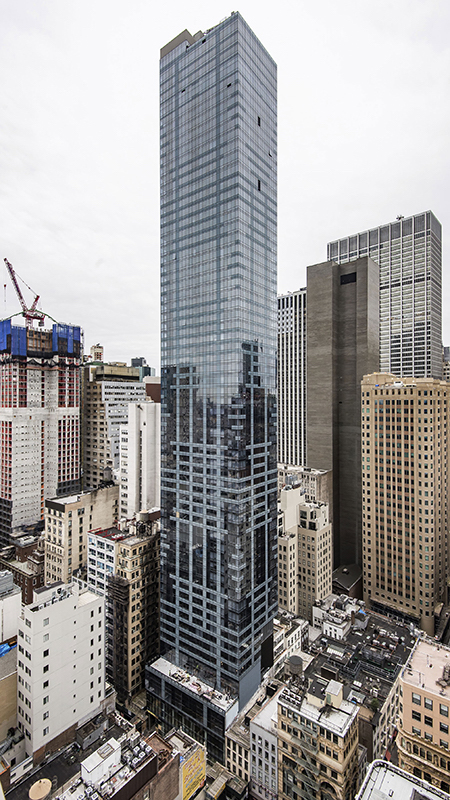
One-fifth of the homes within 19 Dutch, in Manhattan's Financial District, will be affordably priced. Image: Gilbane Building Company
Multifamily continues to address a full range of price options, and higher-end products remain attractive. In St. Paul, Minn., the GC Kraus-Anderson just completed 590 Park, a 57,982-sf building with 92 upscale micro apartments—ranging from 352 to 602 sf—designed specifically for professionals. The $20 million, six-story building—owned by Engelsma Limited Partnership and designed by UrbanWorks Architecture—is near the State Capitol, Regions Hospital, and the Green Line stop at Capitol/Rise Street Station, which provides connectivity to Minneapolis.
However, it also appears that more of what’s being developed, designed, and built targets tenants and buyers seeking affordability.
Among Gilbane’s recent multifamily projects has been 19 Dutch, a 66-story residential tower in Manhattan’s Financial District. Developed by Carmel Partners and designed jointly by Gerner Kronick + Valcarcel and SLCE Architects, the 770-ft-tall tower, which was completed last year, includes 483 furnished apartments, 97 of them affordable. The project also features two floors of retail space and three amenity levels. A rooftop terrace on the 63rd floor is accessible through an adjoining indoor lounge.
“Metrocentric markets make a lot of economic and environmental sense,” says Gagnier, “so we believe there will continue to be demand for multifamily housing—especially affordable housing—in cities and their surrounding areas.” Gilbane anticipates more developer interest in reconfiguring apartment layouts to accommodate home offices.
Summit Contracting still builds “a good bit” on the luxury end of the multifamily spectrum. “But we do see more of a push toward the mid-grade and affordable product,” says Padgett. Summit saw this trend coming a few years ago, and responded with its Summit Prototype Program, which leverages Summit’s buying power and vendor relationships, allowing buildings to be pre-priced and upgraded or downgraded depending on a developer’s budget and desired level of finishes. This program can offset rising land and labor prices and still come in 5-10% lower than a custom-designed project, says Padgett.
Related Stories
| Aug 11, 2010
AECOM, Arup, Gensler most active in commercial building design, according to BD+C's Giants 300 report
A ranking of the Top 100 Commercial Design Firms based on Building Design+Construction's 2009 Giants 300 survey. For more Giants 300 rankings, visit http://www.BDCnetwork.com/Giants
| Aug 11, 2010
Turner Building Cost Index dips nearly 4% in second quarter 2009
Turner Construction Company announced that the second quarter 2009 Turner Building Cost Index, which measures nonresidential building construction costs in the U.S., has decreased 3.35% from the first quarter 2009 and is 8.92% lower than its peak in the second quarter of 2008. The Turner Building Cost Index number for second quarter 2009 is 837.
| Aug 11, 2010
AGC unveils comprehensive plan to revive the construction industry
The Associated General Contractors of America unveiled a new plan today designed to revive the nation’s construction industry. The plan, “Build Now for the Future: A Blueprint for Economic Growth,” is designed to reverse predictions that construction activity will continue to shrink through 2010, crippling broader economic growth.
| Aug 11, 2010
PCL Construction, HITT Contracting among nation's largest commercial building contractors, according to BD+C's Giants 300 report
A ranking of the Top 50 Commercial Contractors based on Building Design+Construction's 2009 Giants 300 survey. For more Giants 300 rankings, visit http://www.BDCnetwork.com/Giants
| Aug 11, 2010
Webcor, Hunt Construction lead the way in mixed-use construction, according to BD+C's Giants 300 report
A ranking of the Top 30 Mixed-Use Contractors based on Building Design+Construction's 2009 Giants 300 survey. For more Giants 300 rankings, visit http://www.BDCnetwork.com/Giants
| Aug 11, 2010
Report: Fraud levels fall for construction industry, but companies still losing $6.4 million on average
The global construction, engineering and infrastructure industry saw a significant decline in fraud activity with companies losing an average of $6.4 million over the last three years, according to the latest edition of the Kroll Annual Global Fraud Report, released today at the Association of Corporate Counsel’s 2009 Annual Meeting in Boston. This new figure represents less than half of last year’s amount of $14.2 million.
| Aug 11, 2010
First CityCenter projects earn LEED Gold
CityCenter announced today that it has received three Leadership in Energy and Environmental Design LEED Gold certifications from the U.S. Green Building Council for: 1) ARIA Resort's hotel tower; 2) ARIA Resort's convention center and theater; 3) Vdara Hotel. ARIA and Vdara will open in December on the Las Vegas Strip and are the first of CityCenter's developments to be LEED certified.
| Aug 11, 2010
Oldcastle Precast Building Systems wins PCI 2009 Sustainable Design Award
Oldcastle Precast Building Systems was part of the award winning team behind the affordable housing development Melrose Commons Site 5 situated in the South Bronx. PCI (Precast Concrete Institute) recently selected Melrose 5 for the “2009 PCI Design Award for Best Sustainable Project”.
| Aug 11, 2010
National Intrepid Center of Excellence tops out at Walter Reed
SmithGroup and The Intrepid Fallen Heroes Fund (IFHF), a non-profit organization supporting the men and women of the United States Armed Forces and their families, celebrated the overall structural completion of the National Intrepid Center of Excellence (NICoE), an advanced facility dedicated to research, diagnosis and treatment of military personnel and veterans suffering from traumatic brain injury.


